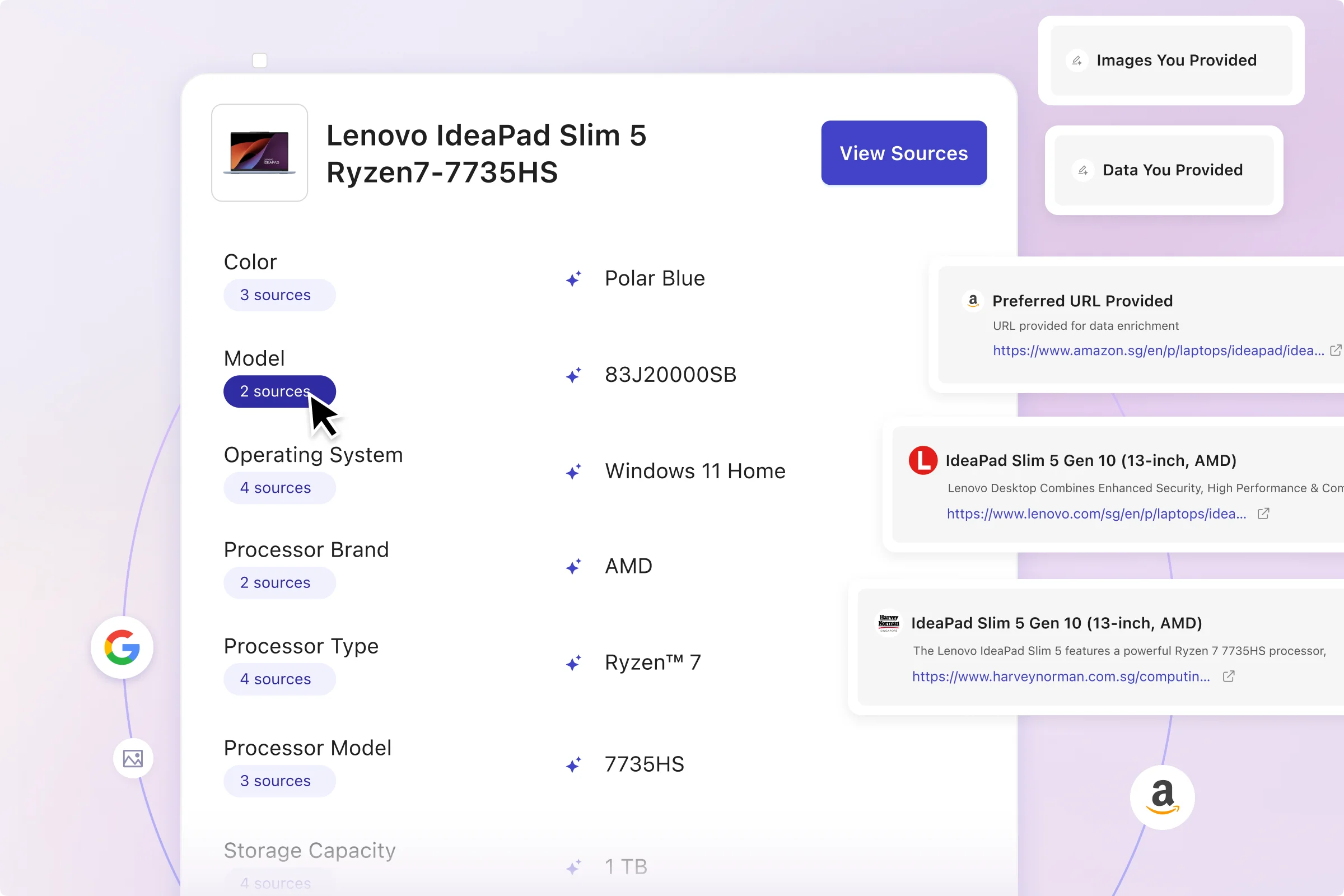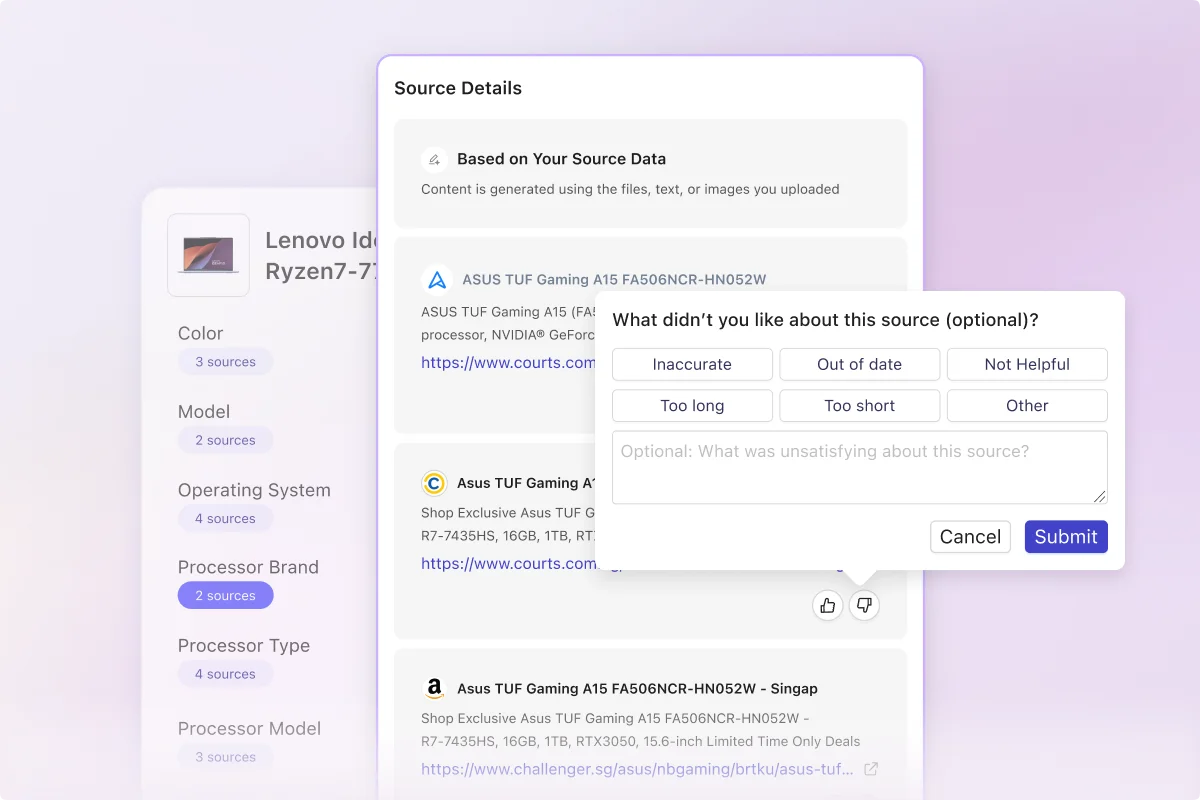
New Data Transparency & Control Tools



Transparency matters when you're scaling your business with AI. Customers expect clear and accurate product content, and you need confidence in how that content is created.
That’s why we’re launching a new suite of Transparency, Control, and Accountability features at Trustana, built for teams scaling with AI.

With our new Explainability Layers, you can see how every description, tag, or attribute was created. You’ll know if the data came from your ERP, a vendor PDF, or public sources like manufacturer websites with the following labels:
You’ll be able to trace where the data was sourced from and update the source upstream, if needed.
You can control that too (read on!).
Within the Trustana platform, you can now set rules to direct exactly which data sources our system should prioritize.

In the settings panel, you can:

Trustana includes built-in approval workflows so your team can review content before it goes live. Every edit that you make goes back into the system for improved performance over time.
Because large scale product content management isn't possible without clarity, control, and trust in your AI systems. Trustana’s latest capabilities directly address challenges that retailers face when scaling product content with AI.
You get complete visibility into how every product description or attribute is created, precise control over data sources that influence your AI content, and intuitive feedback loops. For large retailers, that means fewer mistakes, stronger brand consistency, easier compliance, and smoother operations, no matter how many products you're managing.
Want to try it with your own data? We’ll show you side by side comparisons, your current content vs. AI generated content with full transparency. Get your free demo today